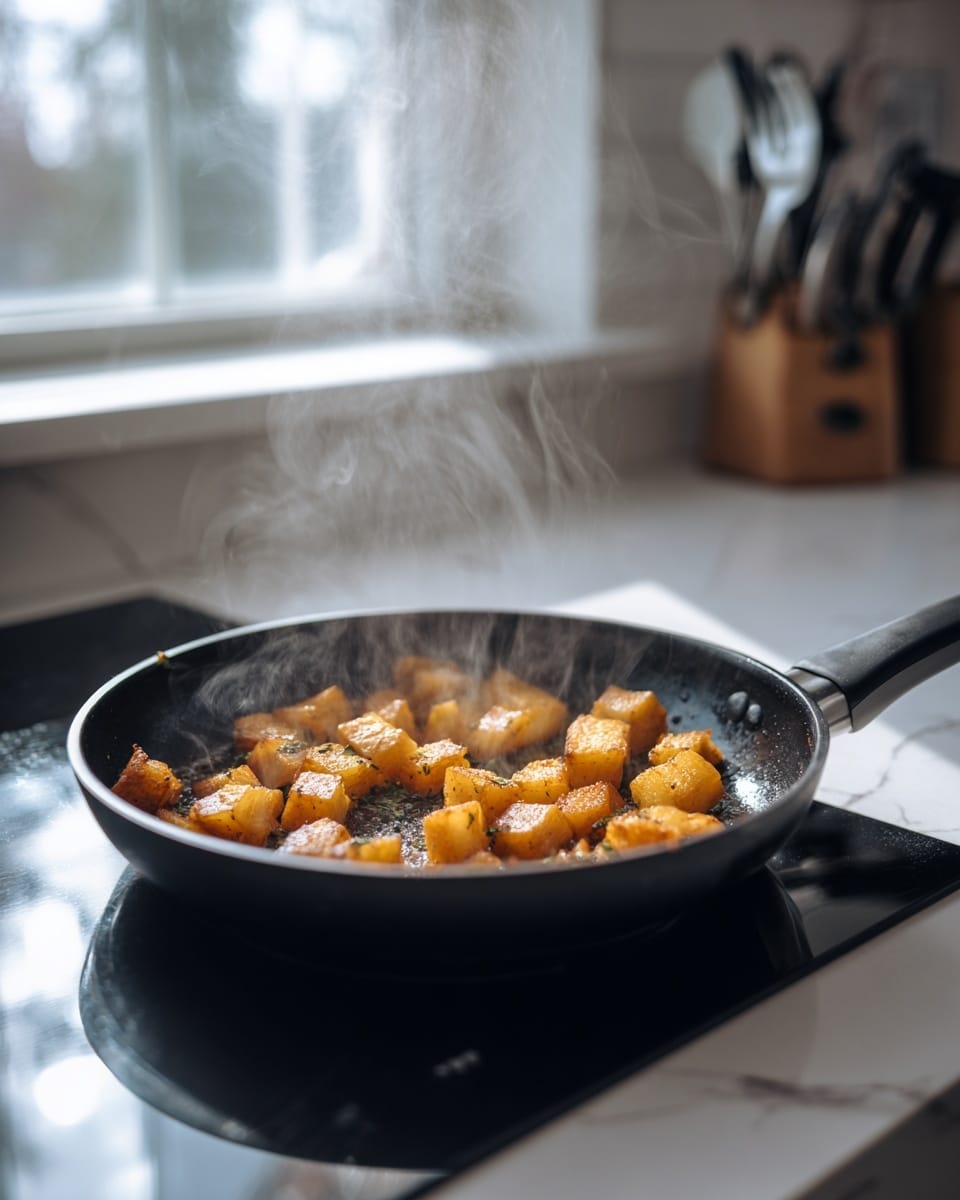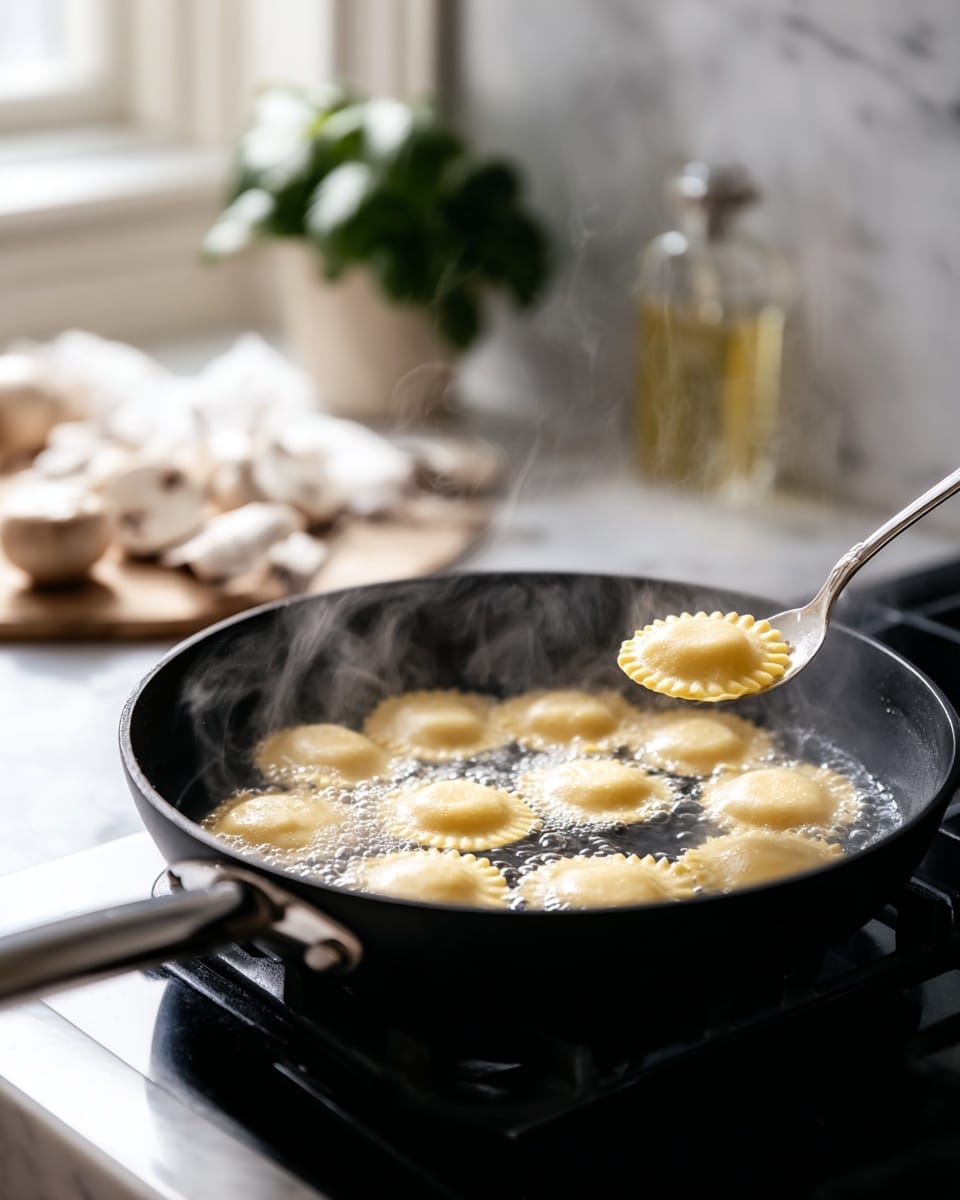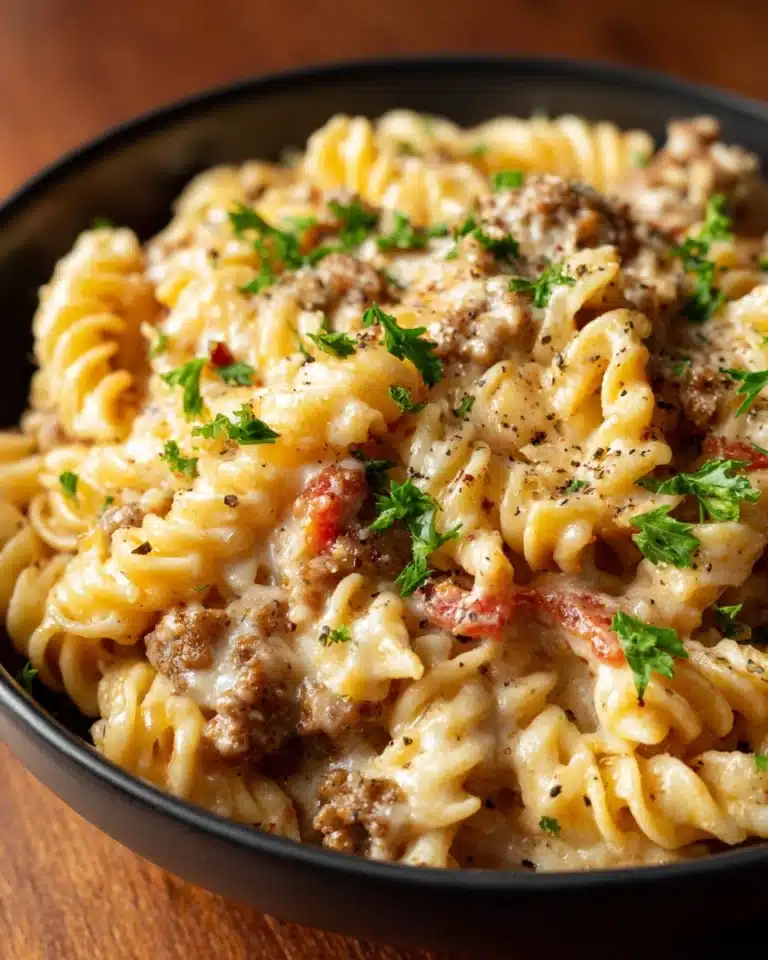If you’re looking to impress friends and family with a truly elegant dish, this Homemade Butternut Squash Ravioli with Brown Butter Sage Sauce Recipe is like a little slice of Italian heaven on your plate. It’s creamy, comforting, and imbued with the warm, nutty flavors of roasted butternut squash paired with a buttery, fragrant sage sauce. Making these tender pockets of fresh pasta from scratch might sound ambitious, but trust me, once you taste that sweet squash filling wrapped inside delicate ravioli sheets, you’ll be hooked for life. This recipe is a fantastic way to celebrate seasonal produce while crafting something that tastes far fancier than it actually is.
Ingredients You’ll Need

Every ingredient here is simple yet incredibly important in shaping the flavors and textures of your homemade ravioli. From the flour for that perfect dough elasticity to the fresh sage that elevates the sauce with its aromatic punch, each plays a vital role in bringing this dish to life.
- 1 1/2 cups Semolina Pasta Flour: Provides the ideal grip and texture for a sturdy yet tender homemade pasta.
- 1 1/2 cups All-Purpose Flour: Balances the semolina for a smooth and workable dough.
- 4 whole eggs: Binds the dough and adds richness.
- 4 tablespoons olive oil: Gives the dough elasticity and a subtle fruity note.
- 4 tablespoons water: Helps bring the dough together perfectly.
- 1 teaspoon kosher salt: Enhances all the flavors in both dough and filling.
- 2 1/2 lbs butternut squash: The star ingredient, roasted for a naturally sweet and silky filling.
- 8 whole garlic cloves: Roasted alongside the squash for mellowed, caramelized depth.
- 1/4 cup olive oil: Used to coat the squash and garlic, encouraging even roasting.
- 1/2 cup parmesan cheese: Adds salty umami to the filling and garnish.
- 1/2 teaspoon dried sage: Infuses the filling with that classic autumnal herbal warmth.
- Salt and pepper to taste: Essential seasonings to perfectly balance the filling.
- 4 tablespoons butter (1/2 stick): Key for browning and creating the luscious brown butter sage sauce.
- 10 whole fresh sage leaves: Steeped in butter to release their fragrant oils.
- 1/4 cup toasted pine nuts: Optional garnish for a delightful crunch contrast.
- Freshly grated parmesan cheese: To sprinkle over the finished dish for an extra cheese kick.
You’ll find the full ingredient list, instructions, and print option in the recipe card below.
How to Make Homemade Butternut Squash Ravioli with Brown Butter Sage Sauce Recipe
Step 1: Prepare the Butternut Squash Filling
Start by roasting your butternut squash cubes and whole garlic cloves tossed in olive oil, salt, and pepper on a baking sheet at 400°F (200°C) for about 25-30 minutes until they’re beautifully tender. The roasting elevates the natural sweetness and adds depth. Once cooled, mash or blend the roasted squash and garlic with parmesan cheese, a pinch of dried sage, salt, and pepper until you have a silky, flavorful filling that’s ready to cozy up inside your ravioli dough. This step is crucial for building that irresistible filling flavor.
Step 2: Make the Fresh Pasta Dough
Mix 1 1/2 cups semolina flour and 1 1/2 cups all-purpose flour in a bowl, then create a well in the center. Add 4 whole eggs, 4 tablespoons olive oil, 4 tablespoons of water, and 1 teaspoon kosher salt. Using your hands or a stand mixer fitted with a dough hook, combine the ingredients and knead for about 8-10 minutes until the dough is smooth, elastic, and no longer sticky. Wrap in plastic wrap and allow it to rest for 30 minutes to relax the gluten, making it easier to roll out thin sheets.
Step 3: Roll Out the Dough
Divide the rested dough into four equal portions. Using either a pasta roller or a rolling pin, roll each piece into long, thin sheets roughly 1/16-inch thick. The thinner the sheets, the more delicate your ravioli will feel—just take care not to make them so thin they tear.
Step 4: Assemble the Ravioli
Lay one pasta sheet flat on your work surface and spoon small dollops of the squash filling about 1-2 inches apart. Lightly brush the dough around each dollop with water to act as glue, then carefully place a second pasta sheet over the top. Press gently around each filling mound to seal, making sure to push out any air pockets, then cut between the pillows with a ravioli cutter or knife to create individual ravioli. Don’t worry if your shapes are not perfect—homemade charm counts!
Step 5: Cook the Ravioli
Bring a large pot of salted water to a boil. Gently drop your ravioli into the water and cook for 3-4 minutes or until they start to float, which means they’re perfectly al dente and cooked through. Use a slotted spoon to transfer them to your serving dish, being careful not to break the delicate parcels.
Step 6: Prepare the Brown Butter Sage Sauce
While the ravioli cooks, melt 4 tablespoons of butter in a skillet over medium heat. Add 10 whole fresh sage leaves and cook until the butter foams and then turns a golden brown, releasing that signature nutty aroma. This sauce is the perfect complement, providing rich depth that beautifully uplifts the subtle sweetness of the butternut squash filling.
Step 7: Toss and Serve
Toss the freshly cooked ravioli gently in the warm brown butter sage sauce, making sure each piece is coated in that luscious glow. Plate immediately and sprinkle toasted pine nuts and freshly grated parmesan cheese on top for a little crunch and extra flavor punch. Voilà—your Homemade Butternut Squash Ravioli with Brown Butter Sage Sauce Recipe is ready to be devoured!
How to Serve Homemade Butternut Squash Ravioli with Brown Butter Sage Sauce Recipe

Garnishes
Adding garnishes like toasted pine nuts gives a contrasting crunch that elevates the soft, creamy ravioli. Freshly grated parmesan cheese adds a salty finishing touch that melts slightly when sprinkled on the hot pasta, while a few extra sage leaves crisped in butter offer both texture and flavor. Don’t hesitate to add a pinch of black pepper for a slight kick that balances the richness.
Side Dishes
This elegant dish pairs beautifully with simple, light sides. A crisp arugula salad dressed with lemon vinaigrette cuts through the butteriness perfectly. Roasted vegetables or a crusty baguette with olive oil serve as fantastic companions that won’t overshadow the delicate ravioli flavors.
Creative Ways to Present
For a wow factor, serve the ravioli on warm plates, drizzle extra brown butter sage sauce artistically around them, and add a few edible flowers or microgreens for a pop of color. Individual servings in shallow bowls with a sprinkle of chili flakes or a drizzle of truffle oil also bring an elevated, restaurant-worthy touch to your meal.
Make Ahead and Storage
Storing Leftovers
If you have any leftover ravioli, store them in an airtight container in the refrigerator for up to 2 days. Make sure to separate layers with parchment paper so they don’t stick together. The flavor might even deepen overnight!
Freezing
Freezing homemade butternut squash ravioli is a great way to enjoy this recipe anytime. Lay the uncooked ravioli on a baking sheet lined with parchment and freeze until solid, then transfer to a freezer-safe bag. They can last up to 2 months frozen. When you’re ready, cook them straight from frozen in boiling water, adding a minute or two to the cooking time.
Reheating
To reheat, gently warm the cooked ravioli by tossing them in the brown butter sage sauce over low heat. Avoid microwaving as it can alter the delicate texture. Reheating this way preserves that fresh-from-the-stove taste.
FAQs
Can I use store-bought pasta dough?
Absolutely! While making your own dough is rewarding, store-bought fresh pasta sheets can save time and still yield delicious results. Just make sure they are fresh and not dried sheets for the best texture.
What can I substitute if I don’t have fresh sage?
If fresh sage isn’t available, dried sage can work in the filling, but for the sauce, fresh leaves fried in butter provide that essential aroma and flavor, so try to find fresh if you can. Alternatively, a small amount of fresh thyme can add a nice herbal layer.
How do I know when ravioli are cooked perfectly?
Ravioli are done when they float to the surface of the boiling water and have an al dente bite—tender but still slightly firm. They usually take 3-4 minutes, so keep a close eye once they start rising.
Can I make the filling ahead of time?
Yes! The butternut squash filling can be made a day ahead and stored in the refrigerator. This lets the flavors meld beautifully and makes assembling the ravioli quicker on cooking day.
Any tips for sealing ravioli without them opening during cooking?
Brushing the edges with water before sealing is key to ensuring a good seal. Press the edges firmly together and remove as much air as possible around the filling. A ravioli mold or cutter helps achieve even sealing and shapes.
Final Thoughts
I can’t encourage you enough to dive into this Homemade Butternut Squash Ravioli with Brown Butter Sage Sauce Recipe. It’s one of those dishes that looks impressive but offers so much warmth and comfort with every bite. The journey from rolling out fresh dough to tasting those buttery, savory ravioli is so satisfying. Whether you’re cooking for a special occasion or just treating yourself, this recipe will surely become a treasured favorite in your kitchen. Enjoy creating magic from scratch!
PrintHomemade Butternut Squash Ravioli with Brown Butter Sage Sauce Recipe
This Homemade Butternut Squash Ravioli recipe features fresh pasta dough filled with roasted butternut squash, garlic, and Parmesan, served with a nutty brown butter sage sauce. It’s a comforting Italian main course perfect for showcasing seasonal squash with a balance of creamy, savory, and buttery flavors.
- Prep Time: 1 hour
- Cook Time: 45 minutes
- Total Time: 1 hour 45 minutes
- Yield: 4 servings
- Category: Main Course
- Method: Boiling
- Cuisine: Italian
- Diet: Vegetarian
Ingredients
Pasta
- 1 1/2 cups Semolina Pasta Flour
- 1 1/2 cups all-purpose Flour
- 4 whole eggs
- 4 tablespoons olive oil
- 4 tablespoons water
- 1 teaspoon kosher salt
Filling
- 2 1/2 lbs butternut squash, peeled and roughly chopped
- 8 whole garlic cloves
- 1/4 cup olive oil
- 1/2 cup parmesan cheese
- 1/2 teaspoon dried sage
- Salt and pepper to taste
- Pinch of nutmeg
- 1/2 cup ricotta cheese
Sauce & Garnish
- 4 tablespoons butter (1/2 stick)
- 10 whole fresh sage leaves
- 1/4 cup toasted pine nuts
- Freshly grated parmesan cheese
- Optional: cracked black pepper for garnish
Instructions
- Prepare the Butternut Squash Filling: Preheat the oven to 400°F (200°C). Toss the peeled and cubed butternut squash with olive oil, salt, and pepper, then roast on a baking sheet for 25-30 minutes until tender. Allow to cool slightly, then mash or blend it together with a pinch of nutmeg, parmesan cheese, ricotta, and roasted garlic until smooth and well combined.
- Make the Pasta Dough: In a large mixing bowl or with a KitchenAid stand mixer, combine 2 cups all-purpose flour, semolina pasta flour, and kosher salt. Add whole eggs, olive oil, and water. Knead the dough for 8-10 minutes until smooth and elastic. Wrap the dough in plastic wrap and let it rest for 30 minutes at room temperature.
- Roll Out the Dough: Divide the rested dough into four equal pieces. Using a pasta roller or rolling pin, roll each piece into thin sheets suitable for ravioli assembly, about 1/16 inch thick.
- Assemble the Ravioli: Lay one sheet of pasta on a clean surface or ravioli maker. Place small spoonfuls of filling 1-2 inches apart. Lightly brush around the filling with water to help seal, then place a second sheet of pasta over the top. Press firmly around each mound to seal and cut into individual ravioli squares or circles using a ravioli cutter.
- Cook the Ravioli: Bring a large pot of salted water to a boil. Add ravioli in batches and cook for 3-4 minutes or until they float to the surface. Remove with a slotted spoon and drain well.
- Prepare the Sauce: In a saucepan over medium heat, melt the butter with fresh sage leaves. Stir frequently and cook until the butter begins to brown lightly and develops a nutty aroma, about 3-5 minutes. Remove the sage leaves if desired.
- Toss the Ravioli: Gently toss the cooked ravioli in the brown butter sage sauce to fully coat each piece.
- Serve: Plate the ravioli and drizzle with any remaining sauce. Garnish with freshly grated parmesan cheese, toasted pine nuts, and a pinch of cracked black pepper if using. Serve immediately for best flavor and texture.
Notes
- Resting the pasta dough is crucial for extensibility and easier rolling.
- Use a food processor to speed up the filling preparation if preferred.
- Fresh sage leaves add a wonderful aroma but can be omitted if unavailable.
- Toasted pine nuts add a nice crunch and complement the butter sauce.
- You may substitute ricotta with mascarpone for a creamier filling.
- Ensure the ravioli are tightly sealed to prevent filling from leaking during cooking.
- Leftover ravioli can be frozen before cooking; separate with parchment paper to prevent sticking.








